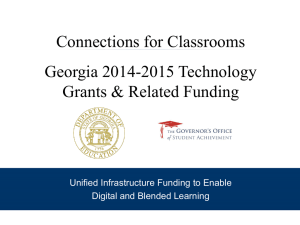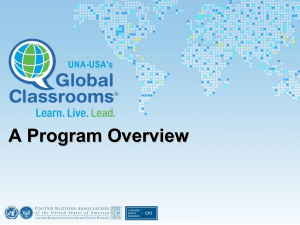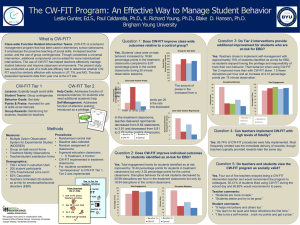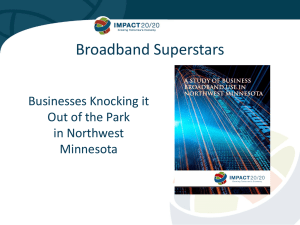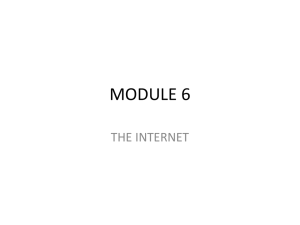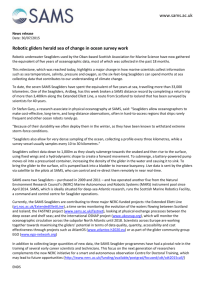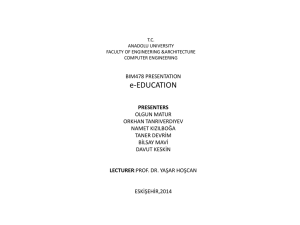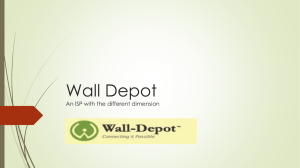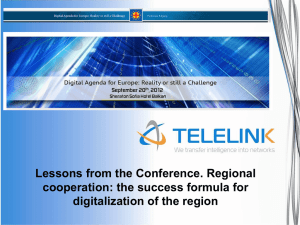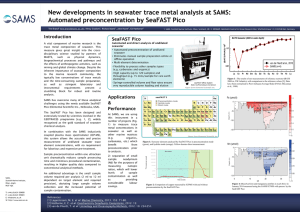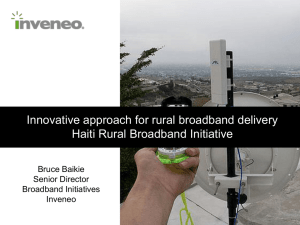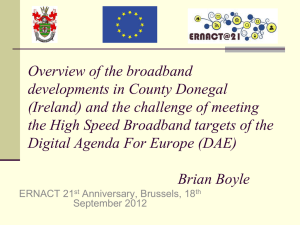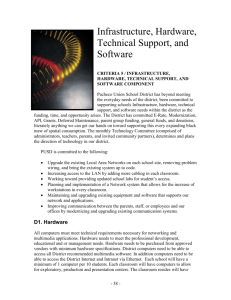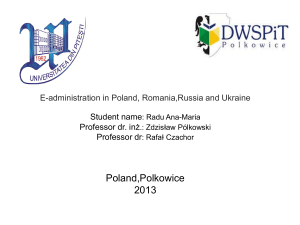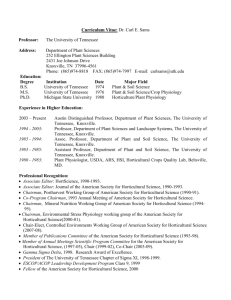From Broadband to e-Education
advertisement
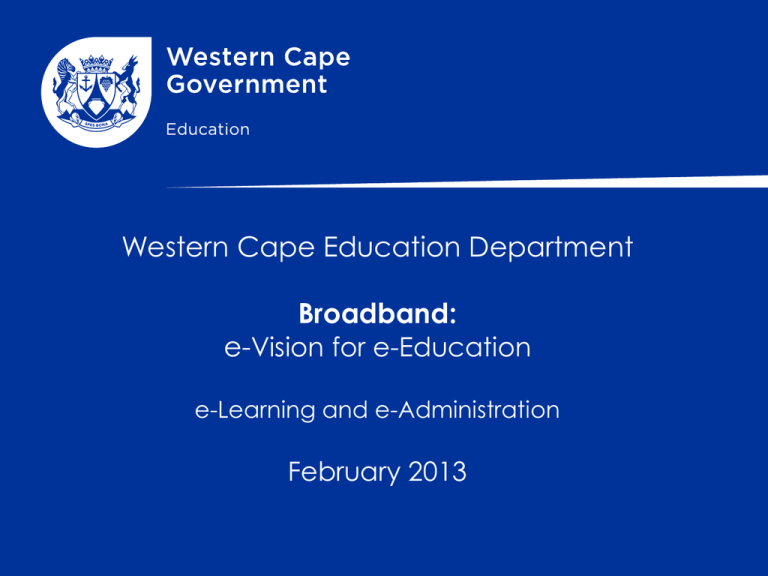
Western Cape Education Department Broadband: e-Vision for e-Education e-Learning and e-Administration February 2013 From Broadband to eEducation • • • • WCG Broadband initiative Schools’ Broadband connectivity by 2014 Implications for eEducation Vision for eTeaching and eLearning (20142024) • Every Teacher and every learner will have instantaneous, real-time, free access to digital learning resources Vision • WiFi LAN in all schools • Handheld devices for all learners • Access to central repository of digital content for eTeaching and eLearning • Simultaneous live lessons broadcast from best classrooms • Online simultaneous assessments • Etc, etc…. Progression Map From: bound controlled classrooms To: always connected, anytime, anywhere access From: consumer of digital resources To: Designer – builder - creator sharer From: Passive learning To: collaborative - self paced – self determined learning From: Traditional teaching To: Supporting – mentoring – facilitating - e-pedagogies From: Propriety software To: Freeware - learning objects - Apps From: Wired LAN To: Wireless LAN - WAN - Cloud From: Computer labs To: Classroom technology – Laptops - Mobile devices Hand held devices From: one-to-many To: one-to-one; many–to-many; networked teaching /learning 2012 29 000 1 000 000 e-Teaching Use of technology to present lessons Use of digital resources to enhance teaching/learning Use of digital resources to support learning CAPS Freeware Learning objects Evolving methodologies Self-paced / individualised mentored learning Online modules Self-determined e-Learning e-Education System WAN Broadband LMS Wireless LAN 1455 schools Internet Wired LAN networks Environment CEMIS/SAMS Networks Collaborative learning Digital teaching & learning resources Integrated pedagogies 2022 e-mentor/support e-Learning enabler Blended f2f/on-line lessons Online lessons / assessment & collaboration/communication Curriculum / Education Propriety software Traditional models 2020 2017 e-lessons e-assessment Extended reach using technologies e-Learning Technology use for traditional tasks Timeline 2015 2014 e-Administration Computer labs Traditional classrooms Wireless networks Computers in classrooms Modified classrooms CEMIS/SAMS integration Online business transacting – focus on data quality Online/Offline secure SAMS – focus on classroom/central policy driven curriculum e-admin Cloud computing Mobile devices in classrooms Multi-media hubs Reconfigured classrooms Online SAMS integrate with National – focus on school finance management/ ecapacity building Mobile hand-held, WIFI enabled devices anywhere National Online SAMS – real-time data used for planning at school/Districts/Provincial/National with built in governance 2030 Skills requirements • Schools, teachers, learners must have access to systems, services, digital content and support: • Ability to service and maintain 1 000 school LANs • Need for supply and maintenance of equipment and devices (laptops/tablets) • Development and maintenance of digital resources • eResources, eTextbooks and eReaders • Need for/development of digital platforms • Training for teachers and learners Classroom of the Future – for ALL
